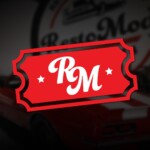The Tri-Five Chevys: A Legend Revisited

America was a very different place in the mid-1950s, back in the heady days of the Eisenhower presidency. The Dodgers won the world series as a Brooklyn team, before relocating to Los Angeles. Rock and roll was just starting to take youth culture by storm, with records like “Rock Around the Clock” and “Great Balls of Fire” bringing the new sound mass appeal. `James Dean was making waves in Rebel Without a Cause. Cold War fears were rife, but the youth just wanted to have a good time. That’s where the revolutionary cars that were the Chevy Tri-Fives come in. They looked good, they didn’t cost too much, and they were positioned at the bleeding edge of automotive technology.
The cars came at a crucial point for Chevrolet, a time when they were needed. Ford had begun to eclipse them in popularity, thanks to beautiful stylings and their eight-cylinder engine, as featured in cars like the 1949 Ford. The Chevy Inline-Six was wearing thin and the market perceived Chevys to be, frankly, dull.
It would be a lie to say that the 265ci OHV short-stroke V8, which would first find a home in 1955 Chevys, came out of the blue. It was developed from the Cadillac V8 of 1949. This, in turn, grew from a long development. According to some sources, the project had begun as early as 1936. Regardless, it was a revolution, and Chevy needed to join the party. In October 1954, the ’55 Chevys did just that.
1955

The cars Chevrolet put out for 1955 were incredible. The public response to their cars was stupendous. The panoply of styles gave the brand true mass market appeal once again, and 1.7 million of them were sold that year, surpassing Ford by 250,000 cars. The styling was bold and emblematic of the 1950s, with tasteful use of chrome and fins. The windshields were raked back and opened, improving visibility. The chassis was made stiffer with a double-wall firewall bulkhead assembly and box-section girder frame. Meanwhile, vents on the base of the cowl hinted at more thought being given to ventilation, drawing in copious amounts of air. The bodies were flattened and widened, a bold move away from the aged looks of models like the 1949 Chevy Deluxe. The suspension was given a much-needed upgrade too, moving away from the venerable KingPin design and on to double ball joints.
The technology found in the Tri-Fives was just as revolutionary as the engine under the hood. This included powered windows, locks, brakes, steering, and seats, air conditioning, and automatic light dimmers. They were advanced, and fantastic machines. Take the Bel Air, for example: this car, if powered by the 265ci V8, produced 162 horsepower, and could be upgraded to 180 horsepower with the inclusion of the Power Pack, which included a four-barrel carb.
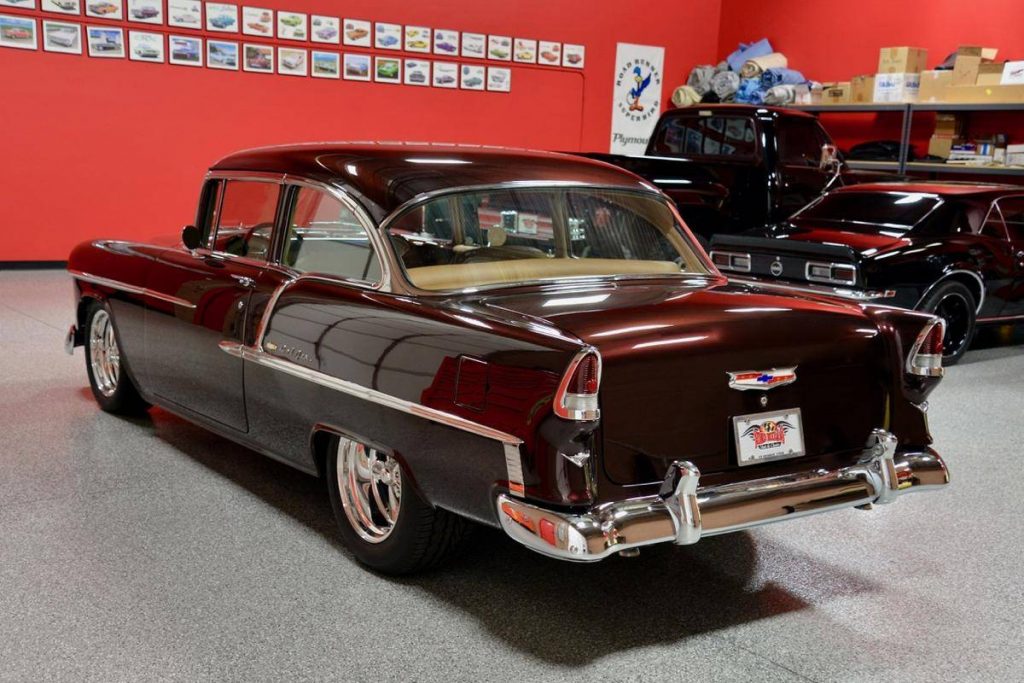
Let’s take a little more time to talk about the engine. Cheap and readily produced, the small-block V8 was an innovation in motor design. The rockers were stamped and mounted to ready-pressed studs, while the pushrods carried the oil to the top end. There was no need for external oil lines on this engine. It was easy to produce and maintain, a key factor in the Tri-Fives’ success.
1956

The changes made to the Chevrolet lineup for the 1956 model year were fairly minor, all things considered, but do divide people somewhat. The small, fairly squat grille you’d find in the ’55 Chevys were replaced with one that stretched and engulfed the parking lights. The straight rear fender trim of the ’55 Chevys now curved down towards the rear of the car, and was wider, with paint required between the two chrome strips. The taillights had changed shape too, no longer half-moon shaped, they were now bullet-shaped, and jutted out of the rear. This also disguised the filler door too, with the taillight on the drivers side being hinged, hiding the filler cap. This is a touch I’d love to see modern cars adopt.

By this point, the 265 V8 was beginning to gain traction among hot rodders. The engine was easy to modify, and the stock engine was already becoming more powerful. An optional upgrade on the small-block allowed an increase in horsepower up to 225 horsepower with twin four-barrel carbs.

This dramatic increase in power was succinctly and beautifully demonstrated by Zora Arkus-Duntov, better known as the father of the Corvette. He took a pre-production 1956 Bel Air to Pikes Peak, completing the climb in 17 minutes and 24.05 seconds, a whole two minutes, 1.65 seconds faster than the previous record.
1957
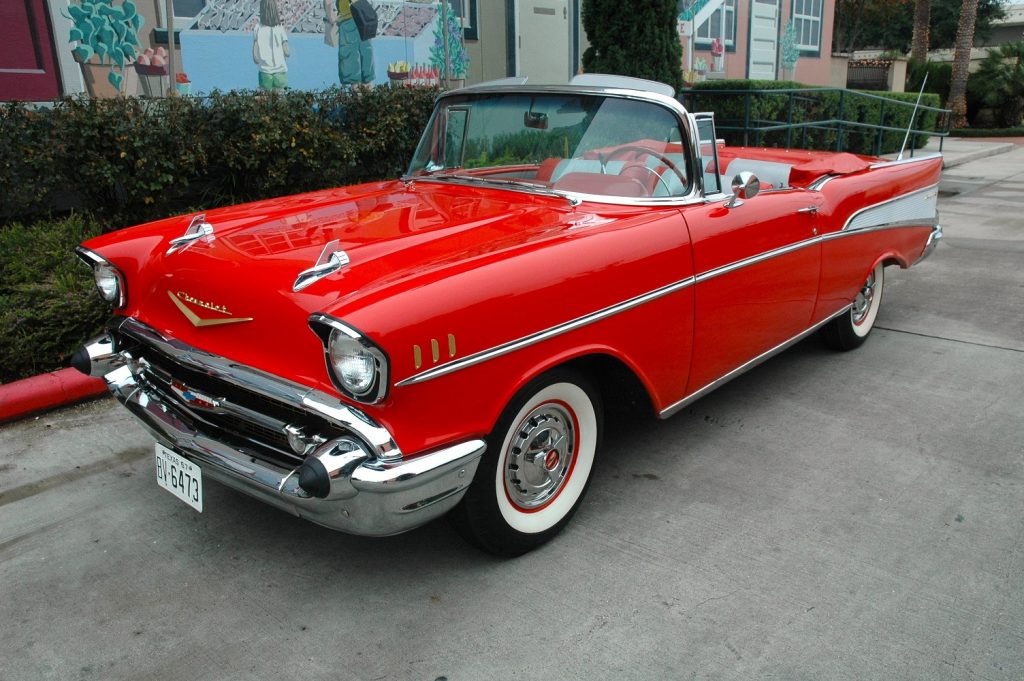
The Tri-Fives’ aesthetics changed yet again for 1957. The tailfins were made sharper and larger, while the hood sported two bumps with “rocket” ornaments. The grille was even wider, the car could featured tri-color paint, and came with a dizzying array of engines. Buyers could opt for the venerable straight-six, the Thriftmaster V8, the 265, and several different varieties of a brand new bored-out 283 V8. Horsepower topped out at 283 horsepower, a very impressive one horsepower per cubic inch, and was available with manual transmission only. This was an engine that was born to be a racer.

This was to be a very successful year for Chevrolet, selling 1.5 million cars. However, Ford also managed to make back some ground, topping Chevy’s sales.
Stars of Screen and Track

The Tri-Five Chevys, as well as being popular with car buyers, made a huge impression on America at large. They’ve been featured in numerous films over the years, from the 1955 Chevy 150 that was featured in hot rodders’ favorite, American Graffiti, to the ’57 Bel Air in Nick Nolte’s Return to Macon County, and a ’56 Chevy in the enjoyable exploitation nonsense of Hot Rods to Hell, they’ve been about a fair bit.

Let’s take a closer look at that amazing Chevy 150 from American Graffiti, that also featured in Two Lane Blacktop. Producer Gary Kurtz had been spending time and racing with Richard Ruth, who had built a big-block ’55 Chevy hot rod. This rod served as the inspiration for two of the three cars that would be used in Two Lane Blacktop, with the third being a more heavily customized car made specifically for stunts.

Ruth set to work, with the studio having one 427 big-block and two 454 big-blocks shipped to his garage. A Weiand Tunnel ram, with twin-barrel Holleys was fitted to the main cars, while the stunt car had a four-barrel Holley fitted, as well as a full roll cage. Two of these cars would then go on to star in American Graffiti as Harrison Ford’s vehicle of choice, with another one bought specifically to be burned.

If you want to see a Tri-Five taken even further than hot rodding, look no further than Tom “Mongoose” McEwen’s ’57 Chevy Funny Car. This particular monster first appeared at the 1988 Pomona World Finals, and put down an ET of 5.72 seconds at 265 mph.
To say that the Tri-Five Chevys were influential would be an understatement. At the time, they were a revolution, and made the marque fun again. They are one of the most common cars for hot rodding in history. So many of them were sold that just about everybody, whether they care about cars or not, will know what they look like. They are a staple of car shows just about everywhere, and the best part is that you can buy a fixer Tri-Five for just a few thousand dollars. Low prices, high power, and easily customizable, they were the everyman’s cruiser, racer, hot rod, or day-to-day ride, but they never compromised on what mattered.
Recent Posts
-

Battle of the Pony Cars: Camaro vs. Mustang
October 29, 2025The battle between the Ford Mustang and the Chevrolet Camaro is the biggest, most lasting rivalry in American car history. These two cars didn’t just…Read more -
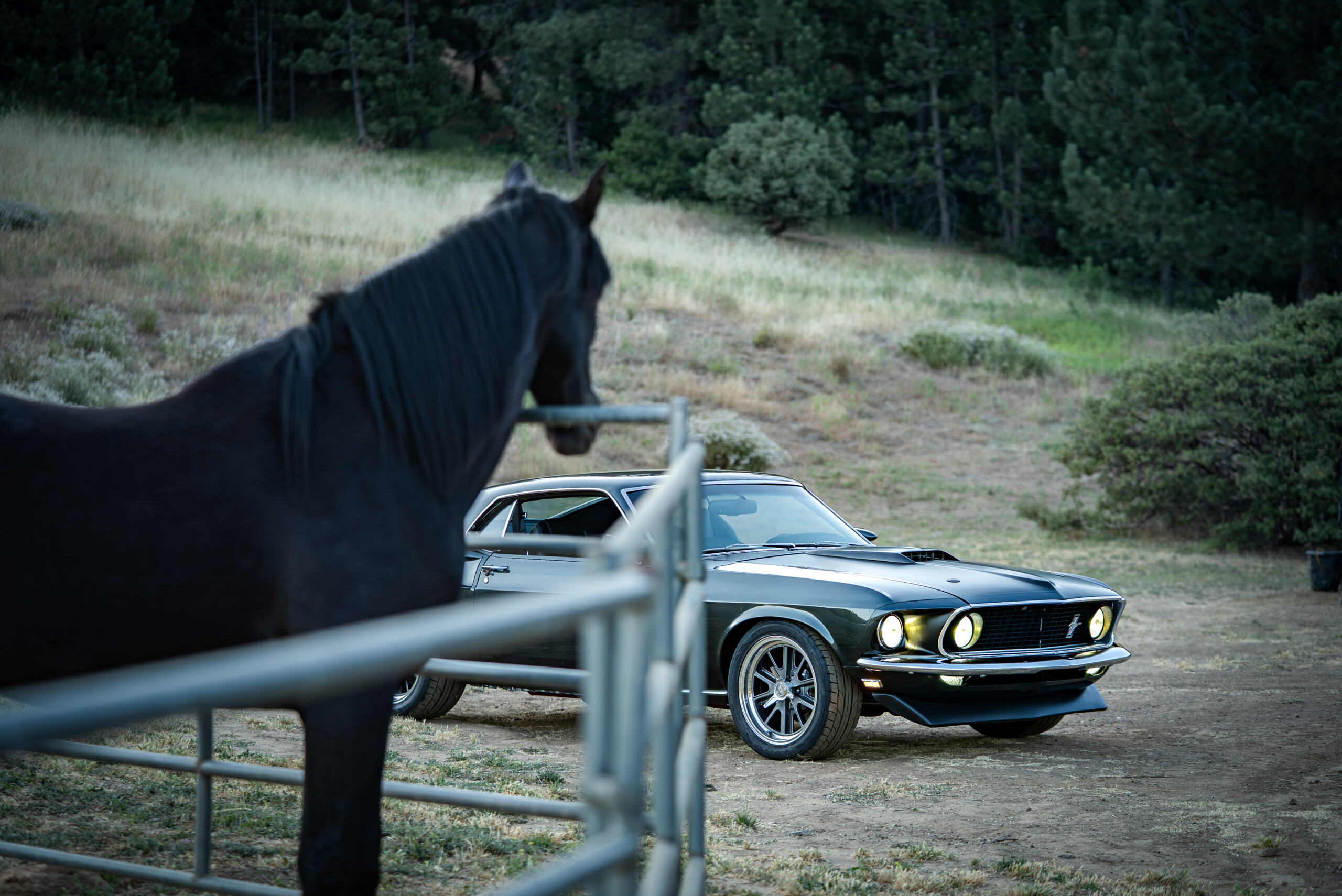
The RM32 Ford Fastback Mustang Build Breakdown
October 24, 2025The Ford Mustang: Historic Start The Ford Mustang is one of the most iconic muscle cars in American history, capturing the imagination of car enthusiasts…Read more -
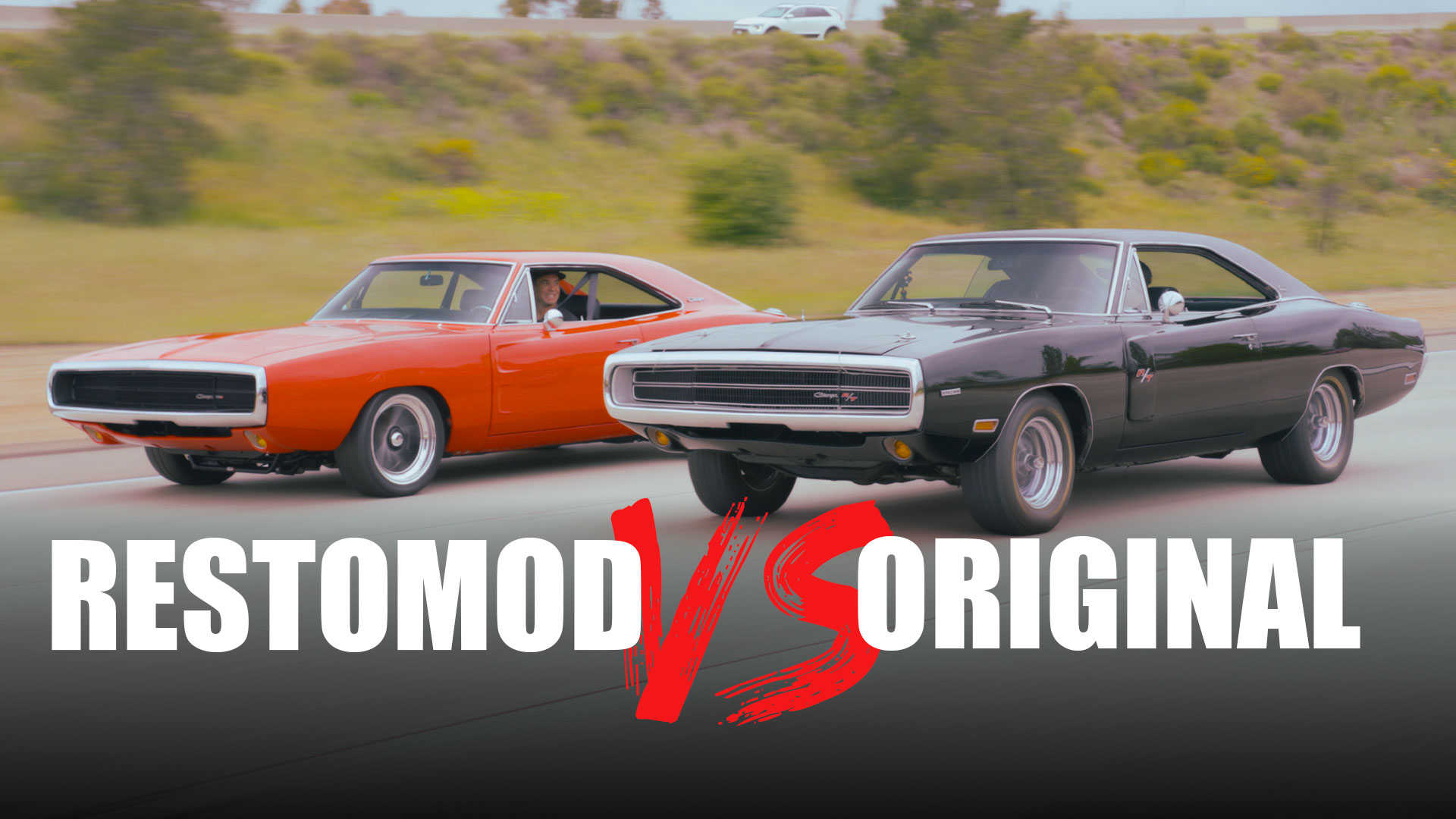
6 Things to Consider: Keep Your Classic Muscle Car Original or RestoMod it?
October 15, 2025When tackling the big question that has become a debate on the internet: Is it better to keep your classic muscle car original or turn…Read more
Become a Car Club Member
Car Club Members Get Entries to Win, Discounts in our Shop, Discounts with our Preferred Partners and more!
Membership benefits
By joining the RestoMods Car Club Today, you will receive amazing perks plus 15 bonus entries into our sweepstakes for every month you are an active member
-
Auto Discounts:Curated Discounts From Your Favorite Parts Companies
-
Restomods Monthly:Monthly Magazine With The Latest Industry News
-
Classified Ads:Get Free Postings seen by 300,000 enthusiasts monthly
-
Car Show Tickets:Check out the biggest vintage car shows on us.
-
Exclusive Car Deals:First chance to purchase any prize cars not selected






Restomods on Instagram
Follow us on Instagram and other networks











